Level up your business with team@relayzo.com
Level up your business with team@relayzo.com

Email marketing is one of the most potent tools of communication with the state of customer connection and conversion. Upon choosing a platform, companies usually have to pick between cloud-based (SaaS) and self-hosted email marketing platforms.
A SaaS email marketing system is a web-based email marketing platform provided by a third party who hosts your email marketing account and you can access it online and pay a subscription fee monthly or yearly. It is easy to install, does not need a server to be managed, and can suit the team that needs to be convenient and fast. But it tends to restrict customization and gives your data into the care of the provider.
Conversely, a self-hosted email marketing software is placed on a local server, where all data and security are under full control, and also the ability to tailor campaigns. Although more technical to set up, it is more flexible in nature and cheaper in the long term. Finally, the choice is based on your business size, budget and the need to be in control or convenience.
Feature / Aspect | Cloud-based (SaaS) | Self-Hosted (On-Premise) |
Customization | Limited: you get the built-in features only | Complete: full access to source code and add-ons |
Control | Low – vendor manages the servers and updates | High – you manage the server, software, and policies |
Maintenance | Handled by provider (automatic updates/patches) | You handle updates, backups and upkeep |
Setup | Fast – no installation needed (ready to use) | Longer – must install/configure on your server |
Vendor Lock-In | High – data export is hard, switching providers is difficult | Low – data lives on your systems, easy to move if needed |
Pricing Model | Subscription (ongoing monthly/usage fees) | One-time license (no per-email/list fees) |
Scalability | Easily scales via provider (just upgrade plan) | Scales by adding server resources (you manage upgrades) |
Security & Privacy | Vendor-provided (you rely on their compliance) | You control security measures and data policies |
A SaaS email marketing service operates on a provider who will host the software and will deliver it via the Internet. It is just a browser or an application that you pay a small fee every month (or year) depending on how much you use (number of contacts, emails sent, etc.). The large benefit is convenience: the vendor will handle setup, upgrades and maintenance on your behalf thus you never need to install anything or patch servers.
SaaS solutions also usually have easy-to-use interfaces and drag-and-drop features that enable non-technical users to create campaigns in a short period of time. They have the ability to automatically scale to support additional subscribers or email messages, you usually simply choose a larger plan and the cloud provider takes care of capacity.
The drawbacks of using SaaS software for email marketing are mentioned below:
You can only do what the vendor allows. In case your company requires a special report, template or workflow which is not built in, you can generally not change the software nor insert custom code. Additional functionality (such as advanced analytics or automation) is usually only found in more expensive plans, if at all.
Since the vendor controls the servers and platform, some control is ceded to the operations. You have to have faith in their security and privacy measures. In a regulated industry this can be an issue: the safety and security of your data will largely be dependent on the security practices of the SaaS provider, and then you will have to wait on them to comply with any new requirements.
Your data is stored within the systems of the provider and it may be hard to get it out. Moving onto a different service in the future can easily require difficult migration of contacts, templates and past statistics. This lock- in renders the movement of platforms painful.
You pay each month without considering the amount you transfer. Prices tend to increase in line with the size of your list and the number of emails sent to them; hence, thriving growth will result in increased bills. That is, you will continue paying the convenience even when your marketing is at hold-up, the subscription will still charge.
A significant number of SaaS offerings rely upon shared IP addresses to send mail. This implies that failure to deliver can occur when other tenants spam or are blacklisted. The issue is that with a large number of senders on the same infrastructure, a single bad player will damage the email reputation of all senders.
A self-hosted email marketing application is one you install on your own server or hosting plan. You buy a license or download the software, then upload it to your web server. You’re responsible for setting it up and keeping it running, but in return you get far greater control. Everything from data storage to the feature set is in your hands.
The drawbacks of using a self-hosted software for email marketing are mentioned below:
You become the system administrator. That is the process of updating and patching, performance monitoring, and regular backups. Without maintenance, the platform may get exposed to attacks or collapse. As an example, a data recovery plan in the case of failure and keeping on top of security patches should be made by your team.
It is time and skill consuming to develop a self-hosted system. Then you will have to setup a web-server (Apache/ Nginx ), database, mail-sending service and install the software. Other vendors offer documentation or paid assistance in installing, but still it is more than registering a SaaS account.
You pay a higher initial price. Besides the license fee, you will need an effective server or VPS (and this may require an additional SMTP relay or dedicated IP). Contrarily, SaaS plans may appear to be cheaper in the first year. Nonetheless, such SaaS expenses continue to accrue.
You should make sure that your server can perform as your list scales. This can include the hardware upgrade, more hosting resources, or more servers. You have to scale and pay yourself unlike in the SaaS where the vendor openly carries out the growth.
Self-hosting needs certain IT expertise. You might have to pay someone to come in or you can invest time in learning how to manage servers in case your team does not have experience. (Note: most self-hosted email systems built in the modern era have been intentionally made friendly or made available by way of managed hosting to address this gap.)
The key factors of SaaS and the best self-hosted email marketing software are mentioned below:
Self-hosted platforms win on control. You can control and operate the system in line with [your] data confidentiality policies, privacy policies, [and] security standards. SaaS, by definition, means you relinquish some control. The provider runs the infrastructure and code for you.
If your marketing needs custom workflows or branding, self-hosted is stronger. SaaS solutions are restricted to built-in features. Even if you want to tweak an email template or report beyond what the SaaS offers, you generally can’t without an expensive upgrade.
Think short-term vs long-term. A SaaS plan has low entry cost (often a small monthly fee), but the ongoing costs grow with your usage. A self-hosted system has a bigger up front cost (software license plus hosting) but after that your main expenses are occasional support or server upgrades.
For example, one comparison chart shows that self-hosting can cost just a few hundred dollars upfront. Whereas a growing SaaS subscription could run into thousands per year (especially as contacts climb). In other words SaaS costs scale with list size while self-hosted costs stay relatively flat.
If you ever want to switch tools, self-hosting gives you freedom. Your data remains yours. With SaaS, however, your email campaigns, contacts, and statistics can be quite difficult to export, making migration cumbersome.
SaaS solutions are typically built to scale out of the box. They handle spikes in subscribers or sends without extra action on your part. On-premise setups require foresight: you must provision bigger servers or distributed resources to handle growth. So SaaS scores points for elasticity, while self-hosted demands planning for capacity.
With self-hosting you are responsible for the server and can enforce company policies. This means you control encryption, access permissions, and data residency. For many businesses (especially regulated ones), having data on-premises or under your cloud account boosts compliance. SaaS handles security on your behalf, but that means trusting the vendor. If their compliance certifications or practices don’t match your needs, you have to rely on them to make improvements.
If you value a hands-off, maintenance-free experience and only need standard email features, SaaS can be a quick win. It lets small teams launch campaigns fast without server hassles. But remember that convenience comes at the cost of limited customization and lack of control, and that monthly fees never stop.
If your business is growing fast, needs unique customizations, or has strict data requirements, self-hosting often pays off in the long run. Modern self-hosted email platforms have become much easier to install and use, one analysis notes they’re not that much more difficult to install and manage today than SaaS. In return, you get flexibility and no per-email or per-contact charges. As Interspire puts it, self-hosted solutions can be significantly more cost effective in the long run while providing the flexibility, customization, privacy, and control that SaaS cannot.
To decide, weigh your budget, growth plans, tech skills and data-control needs. For example, one expert summary advises: Consider your budget, growth plans, technical expertise and data control needs. A self-hosted plugin may suit you if you value customization and data privacy, whereas a SaaS platform is ideal if you want a user-friendly, maintenance-free experience. In practice, many small businesses start with SaaS for convenience and then switch to self-hosted as their needs and requirements grow.
When you are willing to go easy and have quick setups, SaaS will appeal; however, you must be willing to pay continual fees and lose some level of flexibility. A self-hosted solution like Relayzo should be more appropriate in case you require complete control and want to reduce the long-term expenses (and you can deal with some IT work). Before going all the way, think of what factors are most important to your team. With a close comparison of these models, you are able to select the email marketing solution that will better suit your business requirements and expansion strategies.
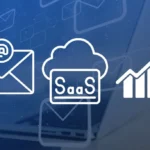


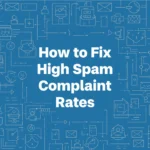


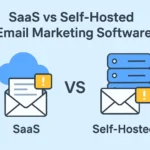

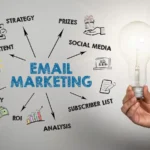

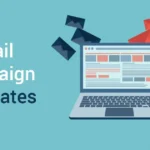









Relayzo is a smart, reliable, and innovative solution tailored to meet all your email marketing needs. With its intuitive interface and powerful features, it helps you create, manage, and optimize campaigns effortlessly.
Copyright 2025 © Relayzo || Designed by Innovteams